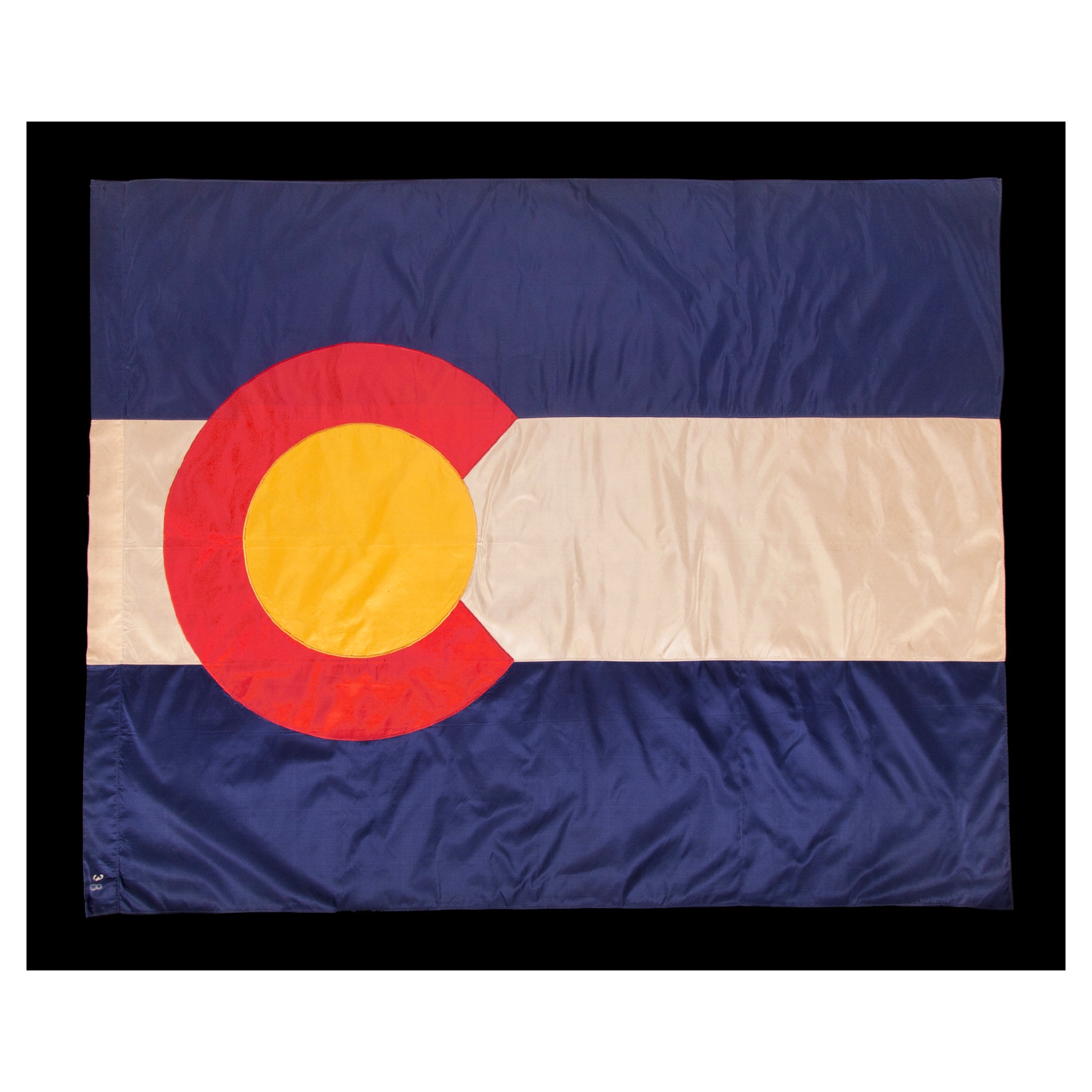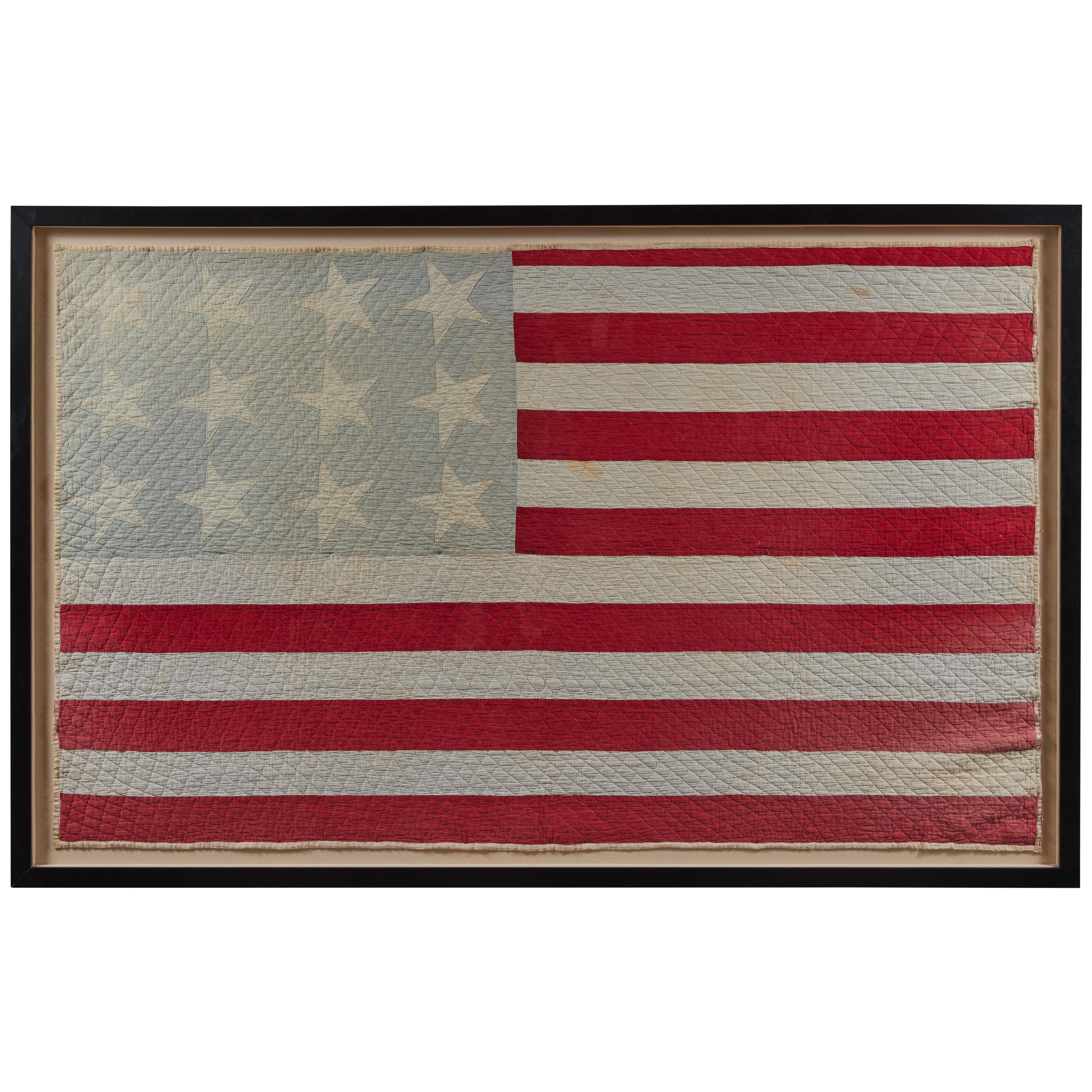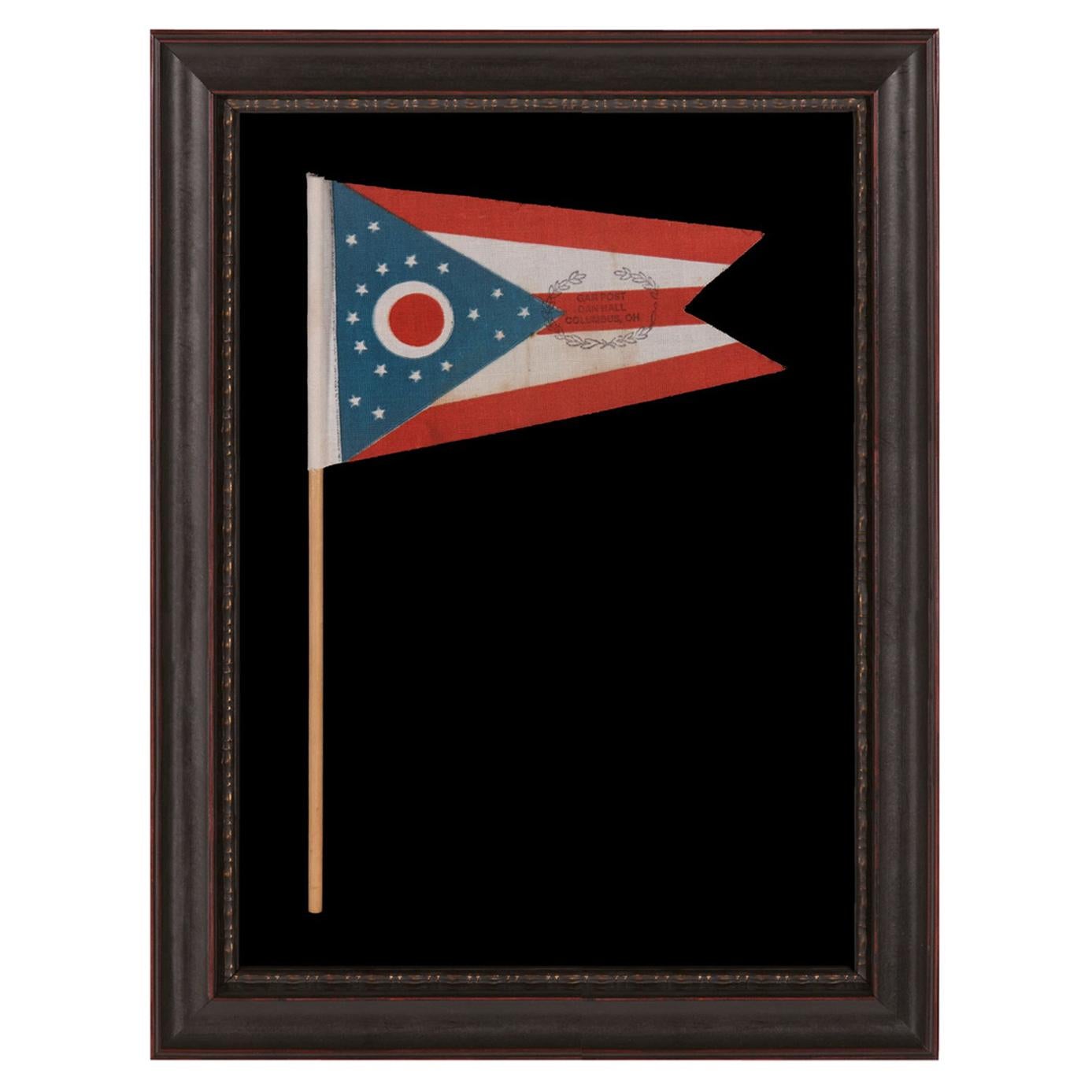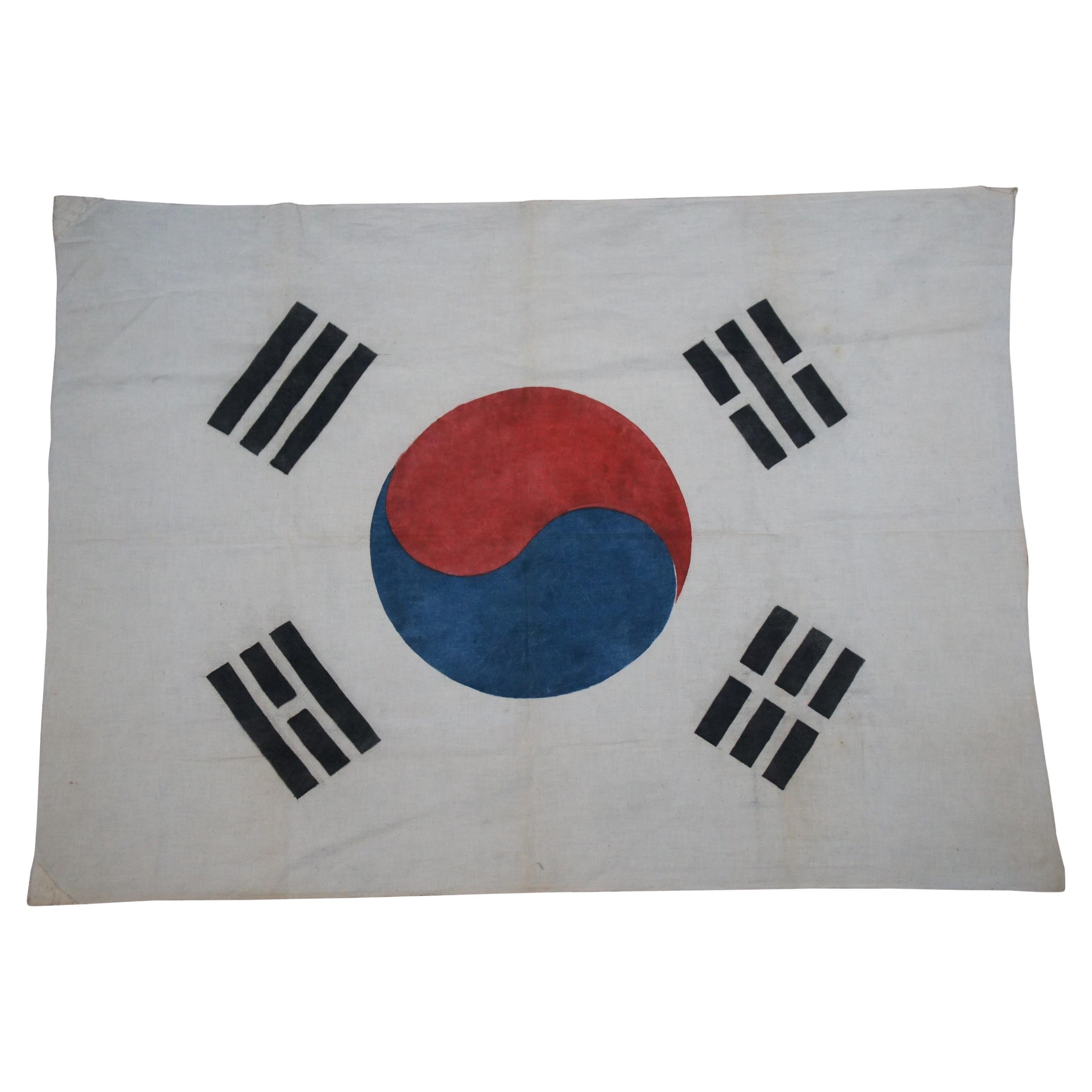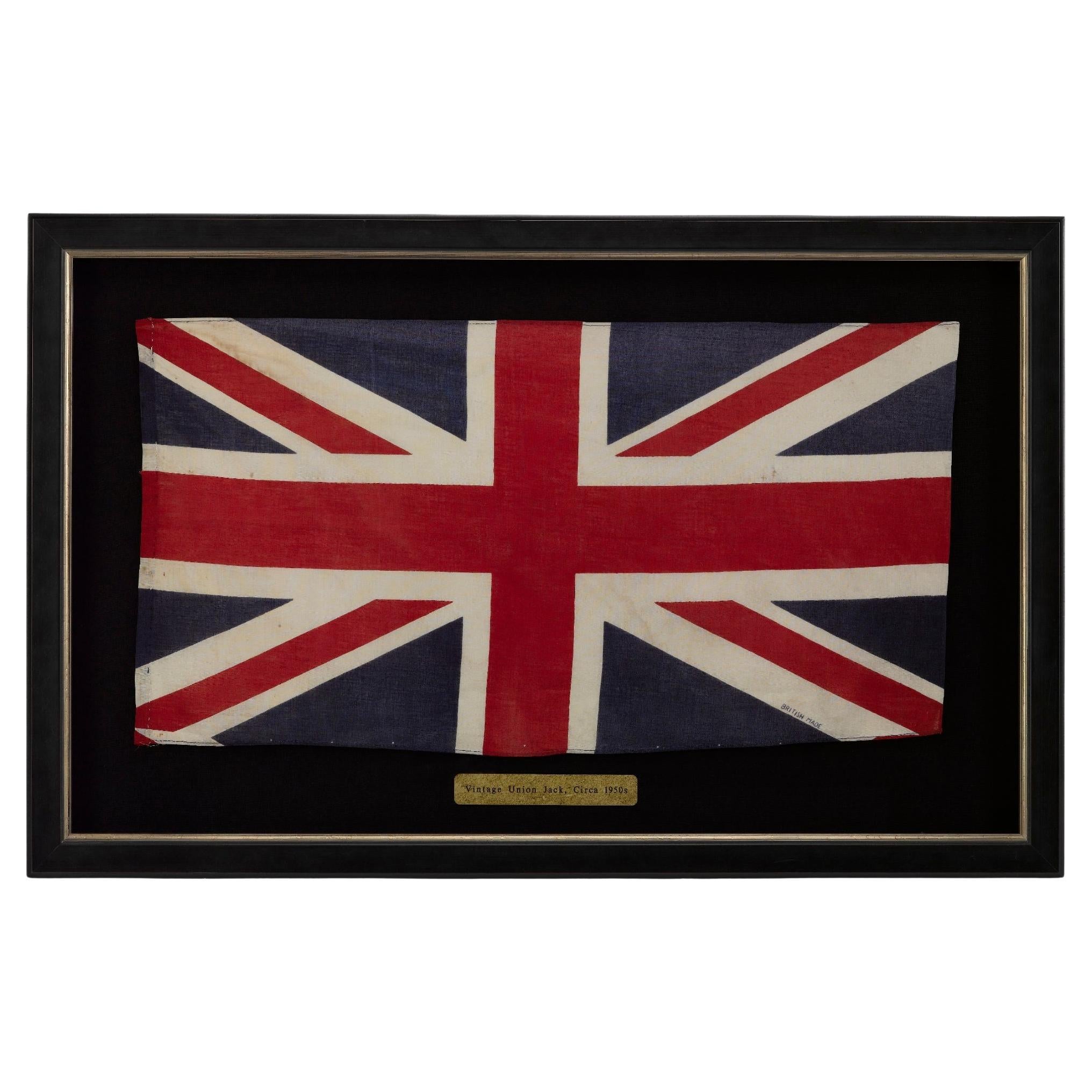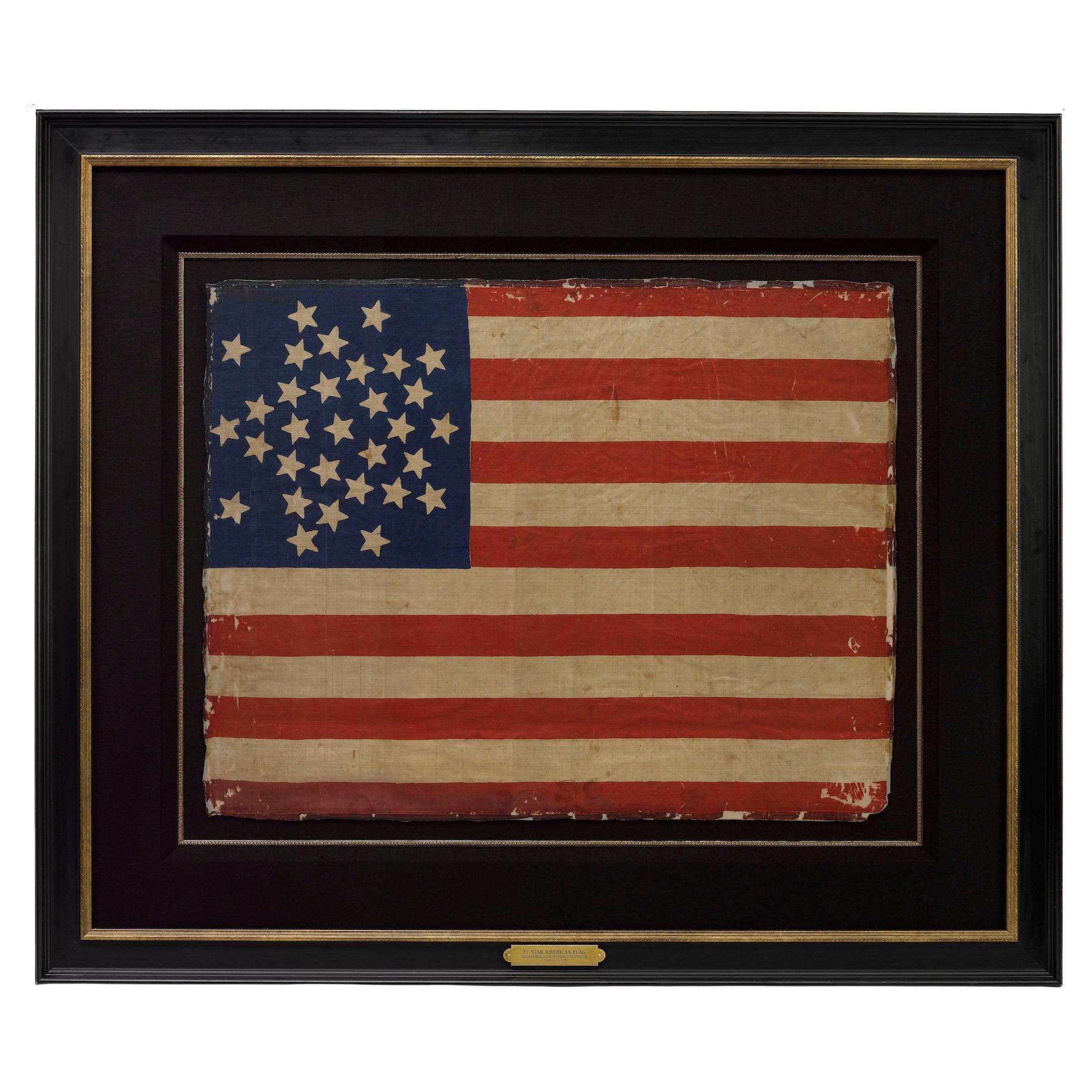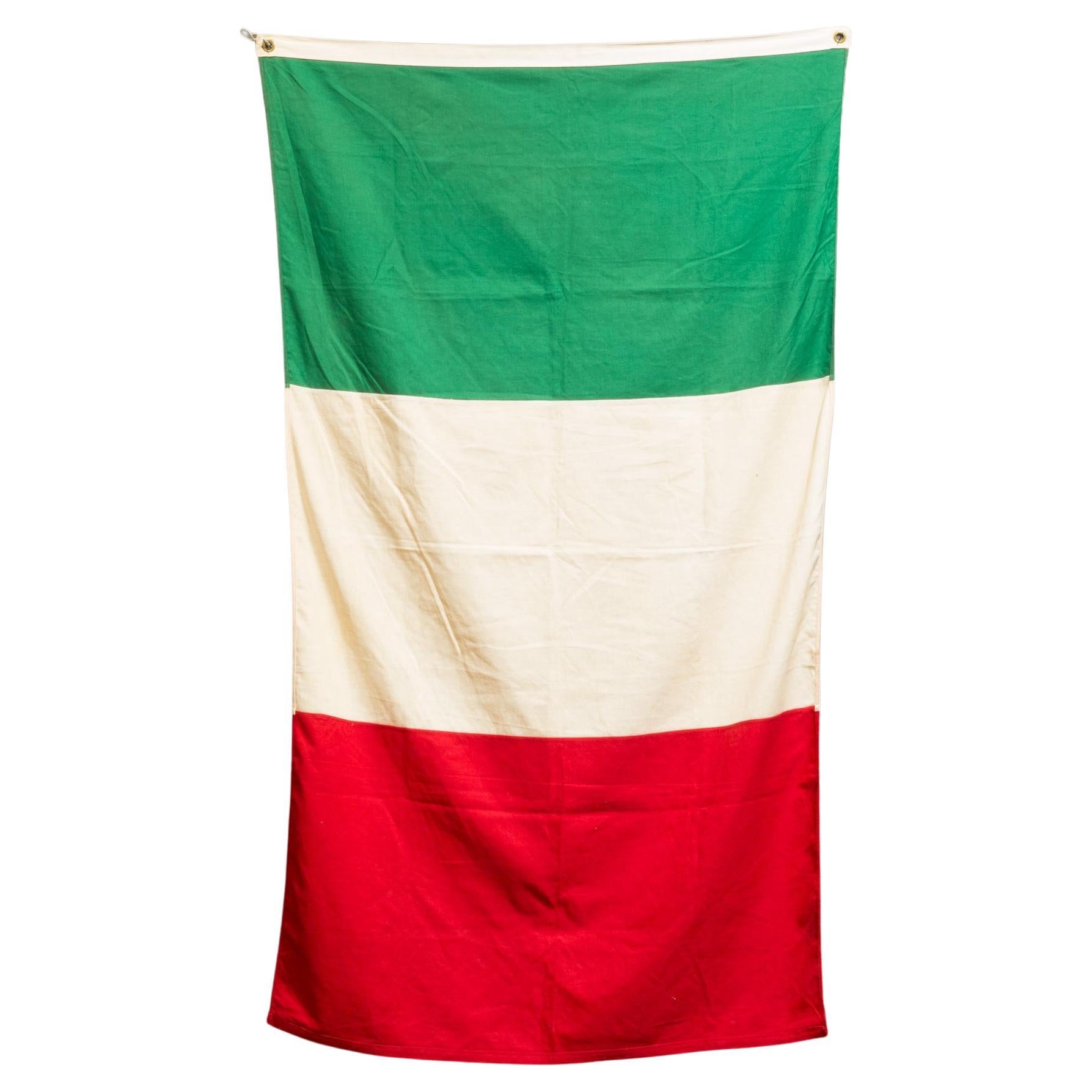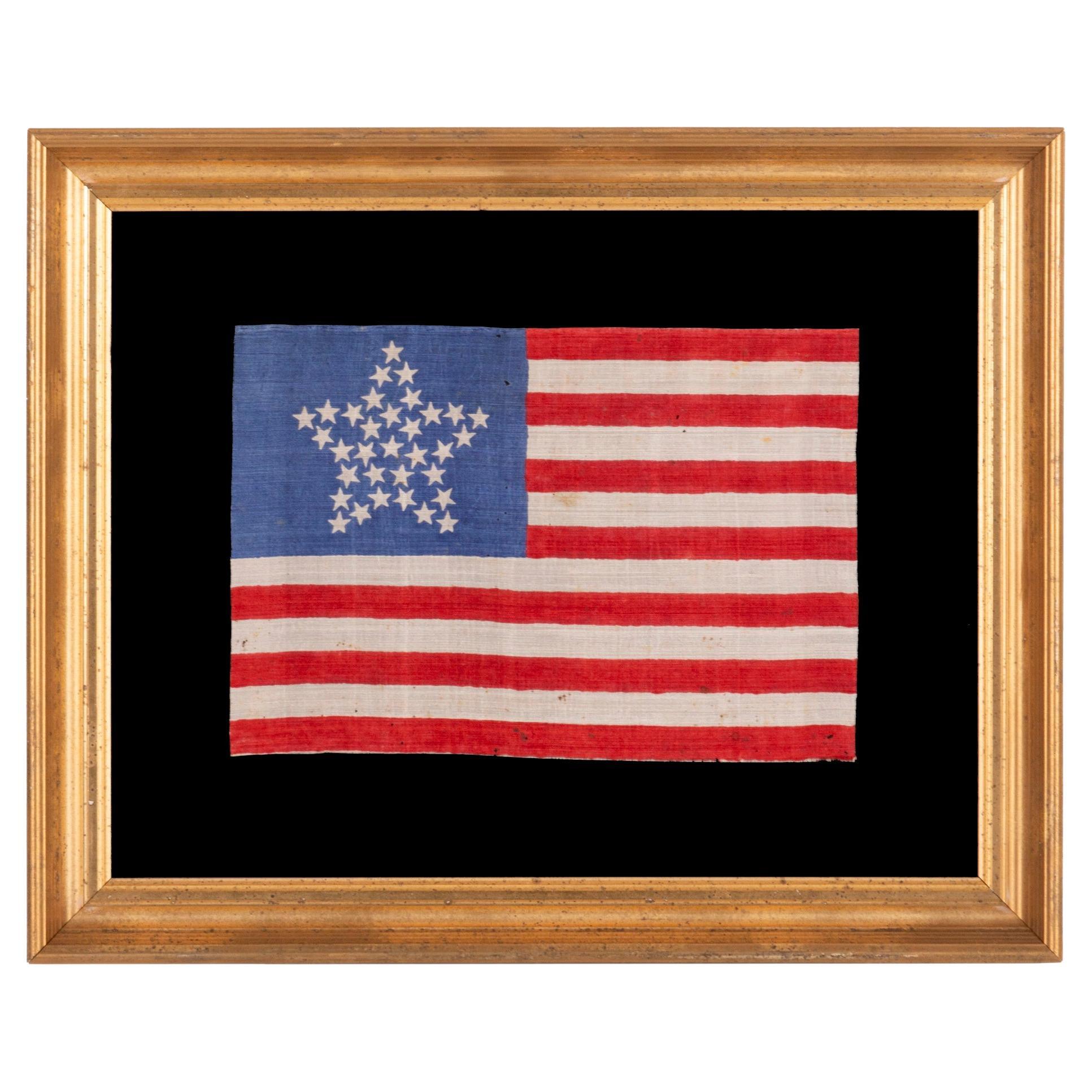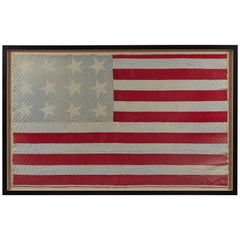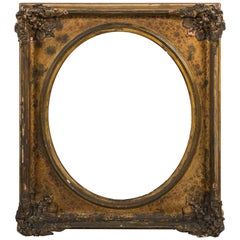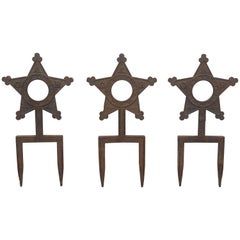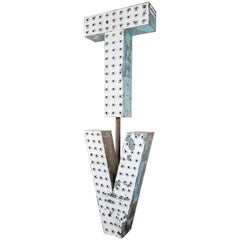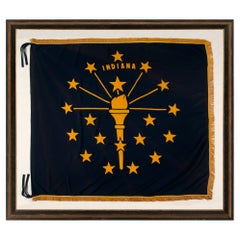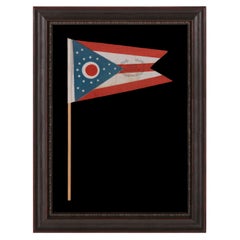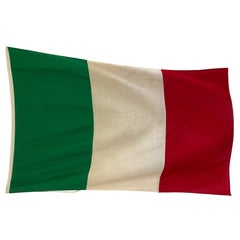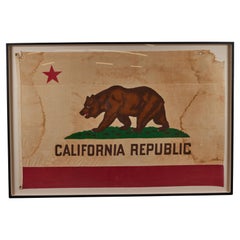
Giant 1950s State of California Bear Framed Vintage Flag
View Similar Items
Want more images or videos?
Request additional images or videos from the seller
1 of 11
Giant 1950s State of California Bear Framed Vintage Flag
Price:$5,500
$6,500List Price
About the Item
- Dimensions:Height: 64 in (162.56 cm)Width: 94.5 in (240.03 cm)Depth: 3 in (7.62 cm)
- Style:Folk Art (In the Style Of)
- Materials and Techniques:Muslin
- Place of Origin:
- Period:
- Date of Manufacture:1950s
- Condition:Wear consistent with age and use. Minor losses. Minor structural damages. Minor fading. Condition as expected for flag that was used in the elements. Some tears and missing fabric. Staining as expected. Please see images and email or call with questions.
- Seller Location:Santa Monica, CA
- Reference Number:1stDibs: LU873433275672
About the Seller
4.9
Vetted Professional Seller
Every seller passes strict standards for authenticity and reliability
1stDibs seller since 2009
251 sales on 1stDibs
Typical response time: 1 hour
Authenticity Guarantee
In the unlikely event there’s an issue with an item’s authenticity, contact us within 1 year for a full refund. DetailsMoney-Back Guarantee
If your item is not as described, is damaged in transit, or does not arrive, contact us within 7 days for a full refund. Details24-Hour Cancellation
You have a 24-hour grace period in which to reconsider your purchase, with no questions asked.Vetted Professional Sellers
Our world-class sellers must adhere to strict standards for service and quality, maintaining the integrity of our listings.Price-Match Guarantee
If you find that a seller listed the same item for a lower price elsewhere, we’ll match it.Trusted Global Delivery
Our best-in-class carrier network provides specialized shipping options worldwide, including custom delivery.More From This Seller
View AllLarge Framed American Flag Folk Art Quilt
Located in Santa Monica, CA
Nicely faded American flag quilt. Excellent hand stitched dancing Folk Art stars. Skilled quilting, a nice graphic large-scale wall hanging. White ...
Category
Early 20th Century North American Folk Art Political and Patriotic Memor...
Materials
Cotton
19th Century Gilt and Gesso Frame attributed to President James Polk Estate
Located in Santa Monica, CA
Early 19th century gilt and gesso picture frame. Found at an estate sale in Columbia, Tennessee. Objects from the sale were attributed to President James K. Polk's estate. Fantastic ...
Category
Antique 19th Century American Folk Art Picture Frames
Materials
Gesso, Wood
Collection of Three Cast Iron Star Victorian Daughters of the Revolution Markers
Located in Santa Monica, CA
Collection of three Daughters of the Revolution cast iron star markers. Marked GAR Thos Feushaw Post 75 Conn.
Category
Antique 1890s North American Folk Art Garden Ornaments
Materials
Iron
Magnavox Television Factory TV Sign, circa 1950s
Located in Santa Monica, CA
Incredible giant TV sign that graced the circa 1950s . Magnavox TV factory in Utah. Just under 11 feet tall. Mounted on original heavy iron pole. Original whit...
Category
Vintage 1950s American Steampunk Signs
Materials
Iron, Sheet Metal
Giant Wood Early 20th Century Hand Painted Americana Barber Shop Sign
Located in Santa Monica, CA
Large and chunky Americana! Fantastic and original Barber Shop trade sign in the shape of a barber pole. Great statement piece. Layers of super graphic red and white original paint. ...
Category
Early 20th Century American Folk Art Signs
Materials
Wood
1950 Vintage American Folk Art Band Stand Hand Painted Goofy Jazz Music Stand
Located in Santa Monica, CA
Hand painted band stand folding music stand, circa 1950s. Great folk art design and Goofy dog painted. Possibly from the Jazz Mill in Phoenix. Great wall han...
Category
Vintage 1950s American Folk Art Signs
Materials
Composition, Metal
You May Also Like
Colorado State Flag, Made of Silk, circa 1911-1920
Located in York County, PA
COLORADO STATE FLAG OF EXCEPTIONAL QUALITY, MADE OF SILK, CIRCA 1911-1920’s, EXTRAORDINARILY RARE IN THIS PERIOD AND THE EARLIEST EXAMPLE THAT I HAVE EVER ENCOUNTERED
Early state flags are few and far between. While I am asked for them constantly, most states did not actually have official flags until the 20th century.
On May 6th, 1911, Colorado became among the last to adopt a design. The project of doing so was spearheaded by the Denver Chapter of the Daughters of the American Revolution. The bill was introduced by Senator W.H. Sharply and adopted by the Eighteenth General Assembly. The artwork was the product of A.C. [Andrew Carlisle] Carson, President of the Ohio Society of Colorado. The meanings behind the elements in the design are as follows: The large letter "C" stands for Colorado and simultaneously for the Centennial State (Colorado entered the Union in 1876, the year in which our nation celebrated its 100th anniversary of independence), as well as the Columbine State (reflecting the state flower). The red color is included due to the fact that the word Colorado translates to scarlet or red in Spanish. The circle represents the sun, while the gold color symbolizes all-the-year sunshine, Colorado’s status as the greatest gold state, and one Columbine color. It was also included so that the Colorado state flag would have one more color than the U.S. flag. The color white reflects Colorado’s status as the greatest silver state, its eternal mountain snow, and one Columbine color. Lastly, the shade of Yale blue symbolizes all-the-year blue sky and one Columbine Color. Members of the D.A.R. were proud to note that this was also their color.
Made sometime between the initial year of the adoption of this design and the 1920’s, this particular flag is the earliest Colorado example that I have ever encountered. The blue and white bars, red “C,” and golden circle are a’’ made of silk taffeta. This was a costly fabric, reserved for the best material a flag-maker produced. The flag is constructed in the manner of a battle flag, to be carried on foot. Squarish in its overall profile, silk was the fabric of choice for flags employed in this function, due to the fact that it was light weight, and thus practical for hand-carrying, while simultaneously formal in appearance, appropriate for the sort of ceremonial use that military presentation often demands. The style of the hoist is also typical for field or parade use. Here the fabric was rolled over to form an open sleeve, through which a wooden staff could be inserted. The sleeve is lined on the interior with black cotton. Leather tabs, at the top and bottom, fit over metal posts on the staff, designed to accept them, to fix the flag in its proper position.
The bars were pieced and joined with lineal machine stitching. The hoist and fly ends were finished and hemmed by the same method. The devices are double-appliquéd (applied to both sides) with a machine buttonhole / blanket stitch. Though machines that produced buttonholes were, remarkably, available alongside the earliest standard machines, in the 1850’s and 60’s, the use of this sort of stitch in a running format, for appliqué work, remained highly unusual, even as late as the first half of the twentieth century, probably because it used a ton of thread when compared to the zigzag or satin stitch. It could be expected to appear more often in the hands of a maker of very fine flags, that employed embroidery machines and commissioned custom, fancy work of all sorts. Though unsigned—in no way uncommon in early examples, which were seldom signed—that is precisely the sort of firm that produced the Colorado flag...
Category
Early 20th Century American Political and Patriotic Memorabilia
Materials
Silk
Price Upon Request
Indiana State Flag, with Gold Fringe circa 1930-1955
Located in York County, PA
Indiana State Flag With Square-like Proportions, An Offset Device, And Gold Fringe, Circa 1930-1955:
Despite the fact that most of the United States joined the Union during the 18...
Category
20th Century American Political and Patriotic Memorabilia
Materials
Cotton
Price Upon Request
Ohio State Parade Flag with a Civil War Veterans Overprint
Located in York County, PA
OHIO STATE FLAG WITH CIVIL WAR VETERANS' OVERPRINT FROM THE GRAND ARMY OF THE REPUBLIC POST IN COLUMBUS, MADE IN MOURNING OF THE 1925 PASSING OF NATIONAL G.A.R. COMMANDER IN CHIEF DANIEL M. HALL, WHO ALSO SERVED AS COMMANDER OF THE OHIO DEPARTMENT OF THE G.A.R., AS WELL AS THE LOCAL CHAPTER
Flag of the State of Ohio, printed on oilcloth-like cotton, affixed to its original wooden staff. Made for Civil War veteran's use, the flag bears a stamped overprint in the striped field that consists of an open wreath of laurel branches, inside which is the following text: “GAR [Grand Army of the Republic] Post, Dan Hall, Columbus, OH”.
Born on October 20th, 1842, Daniel M. Hall enlisted with the Union Army as a Private at the age of 18 on August 25th, 1861. On October 8th of that year he mustered into the Co. H of the 2nd Ohio Cavalry. Discharged for disability on June 28th, 1862, he reenlisted approximately 17 months later, on November 11th, 1863, and mustered into Co. F of the 12th Ohio Cavalry at Camp Cleveland. He was at some point promoted to the rank of Sergeant, and, on February 21st, 1864, to the rank of Corporal. He mustered out at Nashville on November 14th, 1865.
Hall mustered into the Hamlin Post of the Ohio G.A.R. on May 23rd, 1883. He would go on to serve not only as Commander of the Dept. of Ohio for the organization, but as National Commander of the entire Grand Army of the Republic.
The Grand Army of the Republic was the primary veterans association for Union Civil War soldiers. Founded in 1866, its members dressed up in Civil War uniforms, attended parades and reunions, and the organization was somewhat more fraternal in nature than today’s VFW or American Foreign Legion.
Flags overprinted for the purpose of advertising are a specialized form in American flag collecting. A flag with a basic G.A.R. overprint is the most common type. This might be accompanied by a post number and a date. More elaborate the overprints are more highly desired, such as this one, which is the only variation I know of that honors a particular person who was not the namesake of the chapter itself.
It is of interest to note that a sister variety of 48 star parade flag is known, printed on the same fabric, that bears the same overprint, accompanied by the words: “We Mourn Our Comrade." From the additional text on the 48 star variety, one can extrapolate that the flags were made to mourn the passing of this important leader of Civil War veterans on October 19th, 1925, just one day before his 83rd birthday.
The State Flag of Ohio was designed in 1901 by Cleveland architect John Eisenmann, who designed the Ohio building for the state's exhibition at the Pan American Exposition World's Fair in Buffalo, New York. It was officially adopted by the Ohio legislature on May 19th, 1902. It's elements are centered on a red disc, set against a circular white ground that forms a letter "O." This simultaneously represents a buckeye, the fruit of the state tree and an iconic Ohio symbol. The flag's 5 stripes are said to represent the state's waterways and roads, while the triangular shape of the union is said to illustrate hills and valleys. The presentation of 13 stars along the hoist end, arranged in a semi-circular medallion with two off-set stars above and below, reflects the original 13 colonies. The diamond of stars, towards the fly end. bring the overall count to 17 to reflect Ohio's admission. When the design was adopted by the state legislature, the position of these stars was changed slightly, moving them further around the circle to form a wreath.
Flag expert Whitney Smith, who coined the term Vexillology in the late 1950's (the accepted term for the study of flags), pointed out that the format of the flag itself was reminiscent of Civil War cavalry guidons, carried by Ohio regiments throughout the state. These were of swallowtail form, though with 13 stripes, all horizontal and 90 degrees to the hoist. Most often these had circular star patterns around an open center, which makes them even more similar to the Ohio flag...
Category
Vintage 1920s American Political and Patriotic Memorabilia
Materials
Cotton
Vintage Italian Flag
Located in New York, NY
Vintage Italian flag. Vintage Italian flag made by Serpone & Co. Napoli. Italy, Mid-20th Century.
Approximate dimensions: 38” H X 60” W
Category
Mid-20th Century Italian Mid-Century Modern Political and Patriotic Memo...
Materials
Fabric, Cotton, Linen
Rare Original Mid Century 1950s South Korea Korean War Taegeukgi Flag 48"
Located in Dayton, OH
Rare original vintage South Korean / Korean War era flag, circa 1950's. White cotton with screen printed design.
Dimensions:
48" x 34" (Length x Width)
Category
Mid-20th Century Political and Patriotic Memorabilia
Materials
Cotton
$752 Sale Price
20% Off
Vintage Union Jack, Circa 1950s
Located in Colorado Springs, CO
This is a beautiful Union Jack parade flag, dating from the early 1950s, during the early years of Queen Elizabeth II's reign. The flag is printed on cotton, with machine-sewn hemmed...
Category
Vintage 1950s English Mid-Century Modern Political and Patriotic Memorab...
Materials
Cotton
